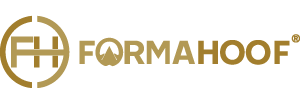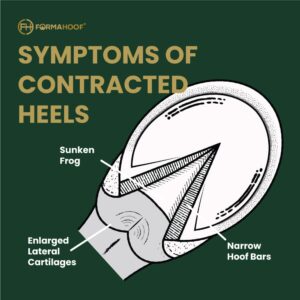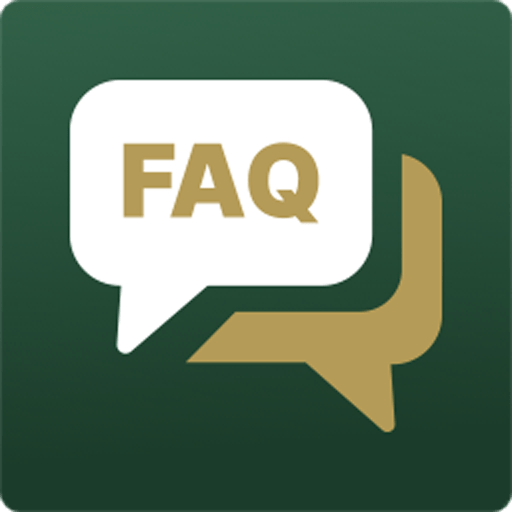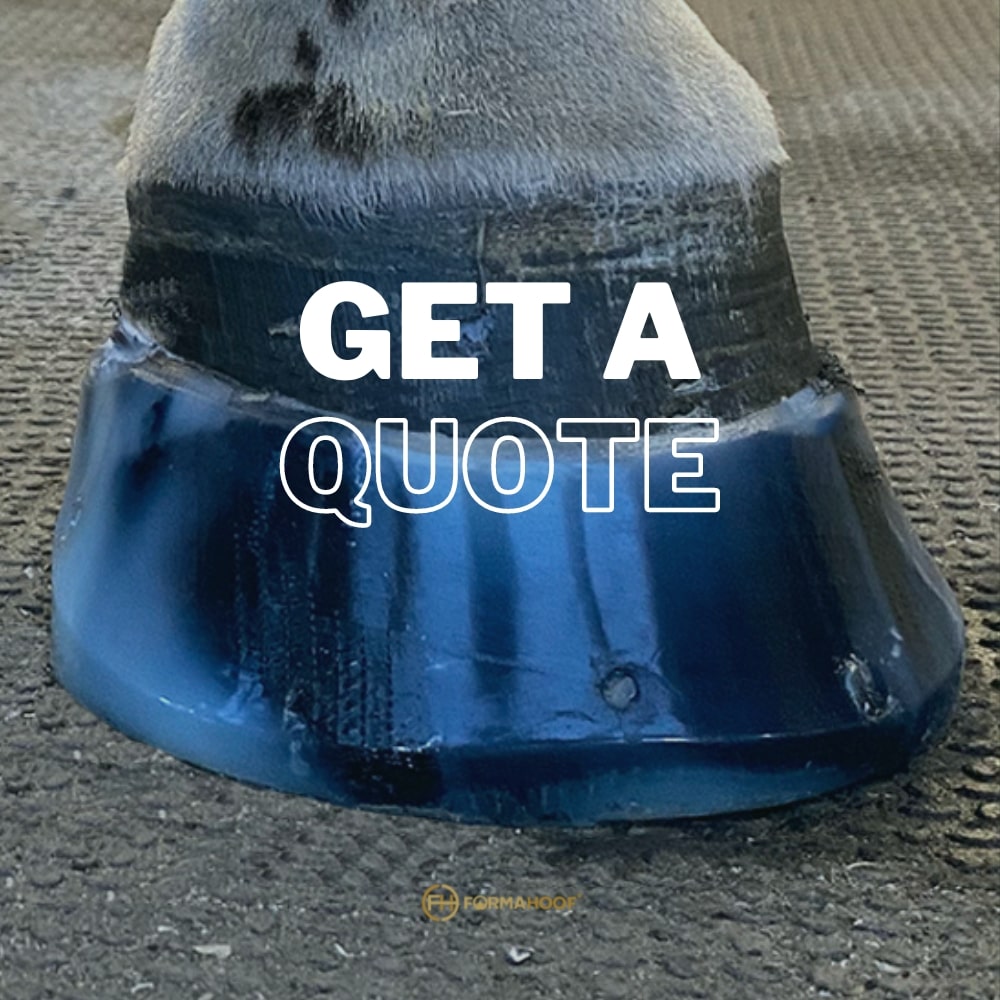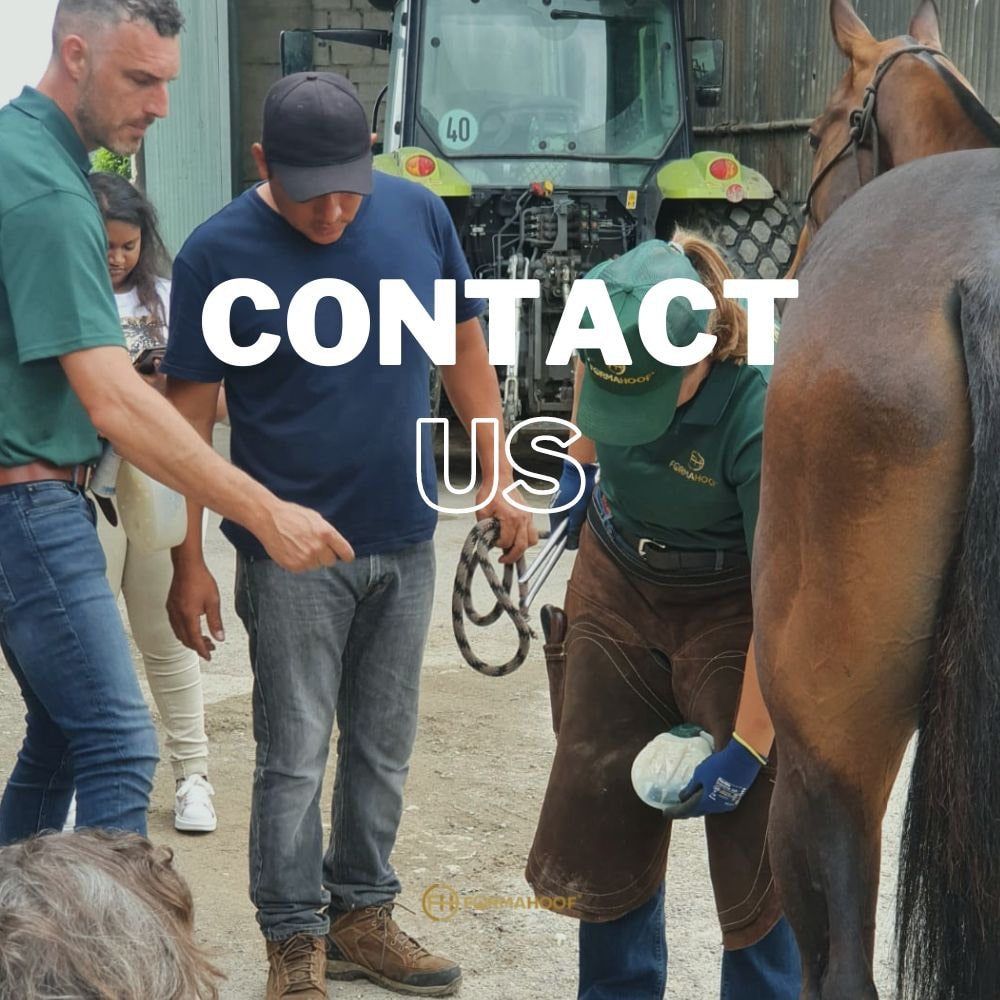There’s a lot more to successful horse breeding than just chance. Genetic selection, performance analysis and selective pedigree matching are crucial to ensure the genetic superiority of the foal. Expertly timed veterinary support gives the best chance of conception, a healthy pregnancy and smooth delivery of the new-born. And excellent stable management is essential to ensure all animals remain in excellent health through the breeding process, and this includes hoof care.
Effective hoof care management is crucial for the health of stallions, broodmares and foals. A healthy mare is more likely to deliver a healthy foal and hoof pain can affect sperm production and productivity in stallions. Hoof care should therefore be high on the priority list when breeding horses.
Hoof Care for Pregnant Mares
The extra weight and hormonal changes that occur during pregnancy present challenges for the in-foal mare and the farriers who care for them. Turning mares and foals out for the season doesn’t mean that hoof care should no longer be a priority, as serious problems can occur when proper hoof care is not maintained. Hoof pain and disease can cause many complications during pregnancy and if things go really wrong could result in the loss of the mare, the foal or worst case scenario, of both.
Laminitis in Broodmares
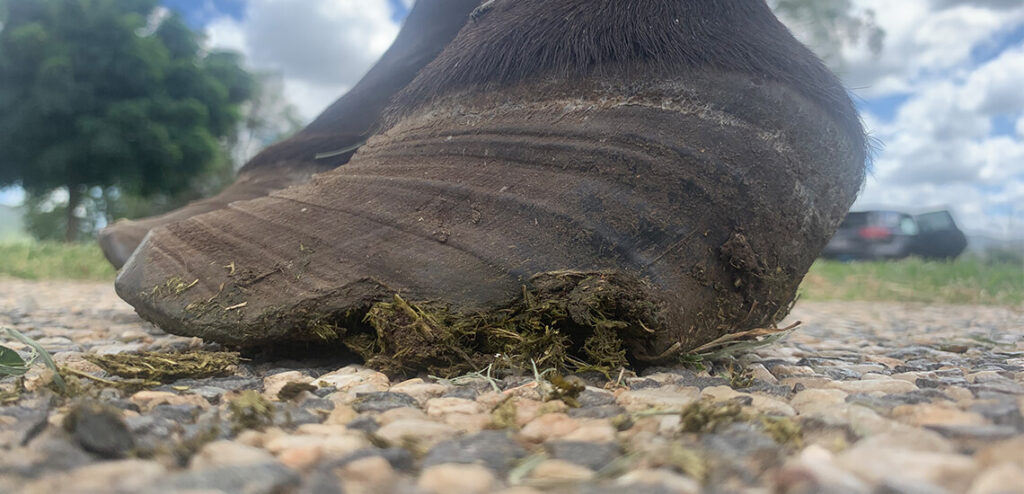
One of the most common hoof problems encountered in broodmares is laminitis. While the specific cause is not fully clear, late pregnant mares can suffer from episodes of the disease. It is thought that the increase in body weight from the growing foetus, together with any underlying Equine Metabolic Syndrome may predispose the mare to laminitis in the later part of pregnancy, particularly if the mare has suffered from previous episodes. Increased hard feed intake, coupled with lush, spring grass containing high levels of soluble carbohydrate, are also significant causal factors.
As laminitis typically worsens in late pregnancy and improves after foaling, the primary treatment focus should be to keep her comfortable until she foals. It’s important to correct the underlying cause as far as possible, while taking into account the mare’s pregnant state.
For example, if it is suspected that the laminitis is associated with increased soluble carbohydrates, her diet should be modified. It is important that the mare does not lose body condition during the final stages of pregnancy. However alternative low sugar, low starch, high oil feed products can be substituted to ensure her energy requirements are met.
Prevention is always better than cure where laminitis is concerned, so starting the breeding season with good quality hooves, the mare in appropriate body condition, maintaining regular trimming and exercise and reducing the percentage of soluble carbohydrates in the diet of mares with a history of laminitis are all important factors in managing these cases successfully. However, prevention is not always possible and when laminitis does strike, FormaHoof can help.
Learn More About Treating Laminitis In Broodmares With FormaHoof Read More
Using FormaHoof to Support and Maintain Healthy Hooves for Broodmares
FormaHoof can be an extremely efficient and effective way to treat laminitis in broodmares, helping to keep the mare comfortable and sound during pregnancy and so carry comfortably to full term and deliver a strong, healthy foal.
As FormaHoof offers correct, balanced hoof support, the mare’s additional weight is spread across the entire hoof, providing relief and comfort. FormaHoof encourages healthy blood flow to the hoof, which encourages healthy hoof growth and an increase in sole depth, while strengthening weak feet from the inside-out, all the while enhancing comfort and helping to reduce pain.
Mares already suffering from laminitis can also benefit from the enhanced comfort and instant, drug-free pain relief made possible by a FormaHoof application.
Learn More About Maintaining Health Hooves With FormaHoof Read More
Hoof Care for Stallions
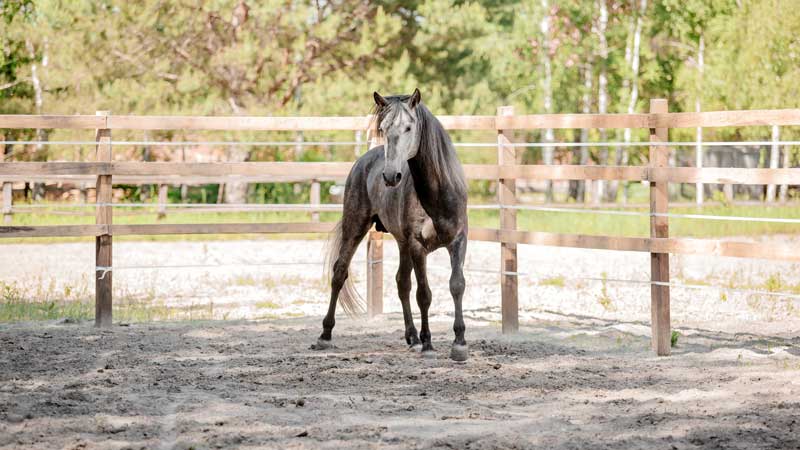
Stallions in natural reproduction are generally kept barefoot. However, as with every horse, hoof care should be tailored to the individual stallion. For safety reasons, many stud farms prefer to keep the stallions’ front feet barefoot during the breeding season, unless shoes are required for health and soundness.
Hind shoes may be indicated for stallions performing live cover or those that become sore-footed during the breeding season. Stallions with flat feet, thin soles, laminitis, hoof cracks or other problems may also be kept shod to help keep them comfortable.
Most stallions at stud enjoy daily turn-out in a grassy paddock and this can also play a part in their hoof care routine. Hooves tend to become dry and brittle when horses are stabled 24/7, so daily turnout can help to keep hooves healthy.
See How FormaHoof Boosted This Stallions Subsequent Collections! Read More
Using FormaHoof for Stallions During Breeding Season
FormaHoof can provide the extra comfort your stallion may need for an efficient and successful breeding season. While traditional shoeing can pose a risk to both staff and mares, FormaHoof offers enhanced comfort for the stallion, while improving safety for all concerned.
Designed to imitate a healthy, natural hoof, FormaHoof applications are non-metallic and cause no damage to the hoof wall. FormaHoof AP is non-toxic, non-osmotic and does not require a strong chemical bond to attach to the hoof structures, meaning that there is no chemical exchange and no proteins are leached from the hoof wall.
FormaHoof also protects the hooves from absorbing large volumes of water, whilst creating a clean, moist environment where the hoof can stay naturally hydrated and maintain a healthy moisture balance.
Whilst there is no scientific proof that hoof pain can cause a drop in the production of semen, a case was reported to us by DMV Bruce Buenger/Texas where a stallions’s sperm production increased while he was being treated for laminitis with FormaHoof.
Hoof Care and Angular Limb Deformities in Foals
Horses have evolved to be able to stand and move within a couple of hours of being born. This is their natural instinct as in their natural environment they may have to flee from predators soon after birth. Initially, the new-born foal will appear to be ‘all legs’, but don’t be too critical in the first few days, as minor abnormalities often disappear once the foal starts to strengthen and exercise.
If a foal is developing correctly, the first hoof trimming should take place at around the age of 4 to 6 weeks and their hooves should be lightly trimmed frequently rather than trying to remove too much horn at once.. Depending on the season, where the foal lives, its hoof and stance development, maintenance trimming should then be performed every 6 to 8 weeks.
Occasionally, however, one or more of the foal’s limbs deviates either towards or away from midline when viewed from in front or behind and may require treatment, a condition known as angular limb deformities (ALDs).
The degree of deformity present at birth (congenital) can range from very mild to severe. Angular deformities may also develop during the first few weeks and months of a foal’s life (acquired). Congenital and acquired angular limb deformities can be complicated by rotational and flexural limb deformities and so a full and proper assessment should be made before treatment is instigated. If left uncorrected, persistent moderate to severe deformities can affect the long term soundness of the adult horse and its ability to function as an athlete.
How Do I Confirm if it is Angular Limb Deformity?
Whilst angular limb deformity is diagnosed by watching the foal stand and walk, radiographic (x-ray) examinations may be required to confirm the site and severity of the angulation, whether the growth plate (epiphysis) or small bones of the knee or hock are involved and what is the best form of treatment. Long x-ray plates are often used, so that straight lines can be drawn through the long bones to confirm precisely where the deviation occurs and by how much (angle).
Treating Limb Deformities in Foals with FormaHoof
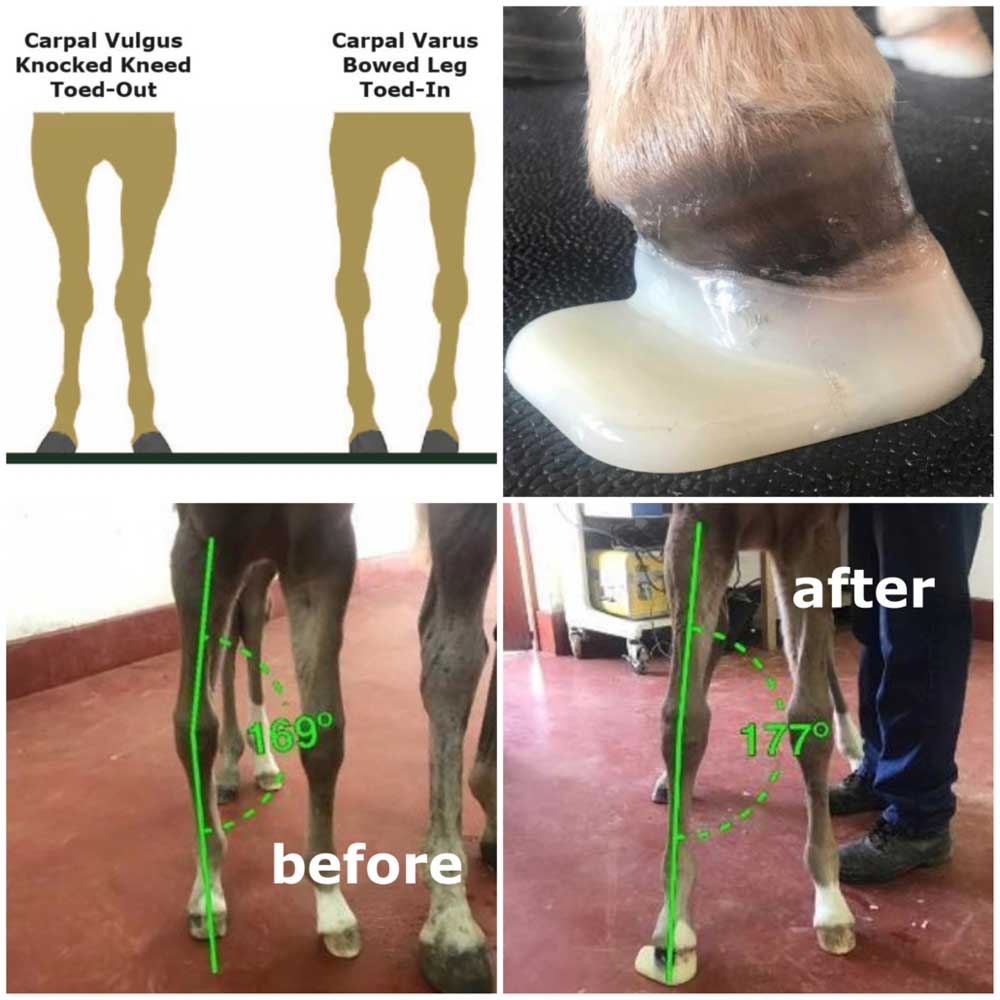
Many cases of angular limb deformity will respond to good farriery, but others will require and benefit from treatment with an appropriate hoof extension.
Expertly designed to offer orthopaedic support to the developing leg while ensuring balance in the hoof capsule, FormaHoof Foal Extensions are an extremely effective way to treat limb conformation faults in foals. By giving experienced equine professionals the tools needed to support the foal’s legs and feet through its early development period, FormaHoof can help put it on the right track towards straight, strong limbs for life.
A selection of Mould shapes are available to assist with a wide range of different conformation issues and it’s easy to select the best option according to your own foal’s conformation and limb development challenges. Safe to use in the herd and field, FormaHoof foal extensions are quick and easy to apply, can be easily removed without damaging the hoof capsule and the low curing temperature means there is no discomfort to the foal.
With proper care, FormaHoof Moulds are reusable up to 100 times and by correcting a foal’s conformation early, the value and long term soundness of the animal is enhanced, making FormaHoof a very worthwhile investment.
